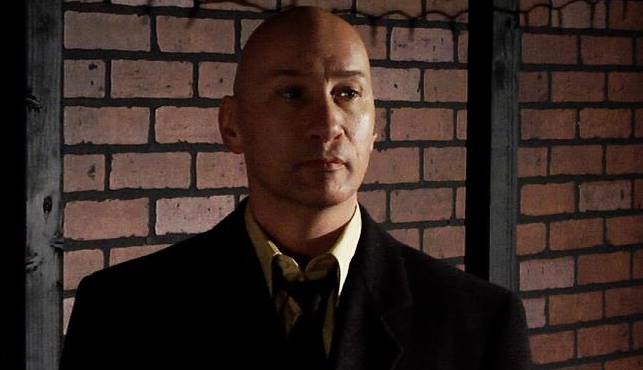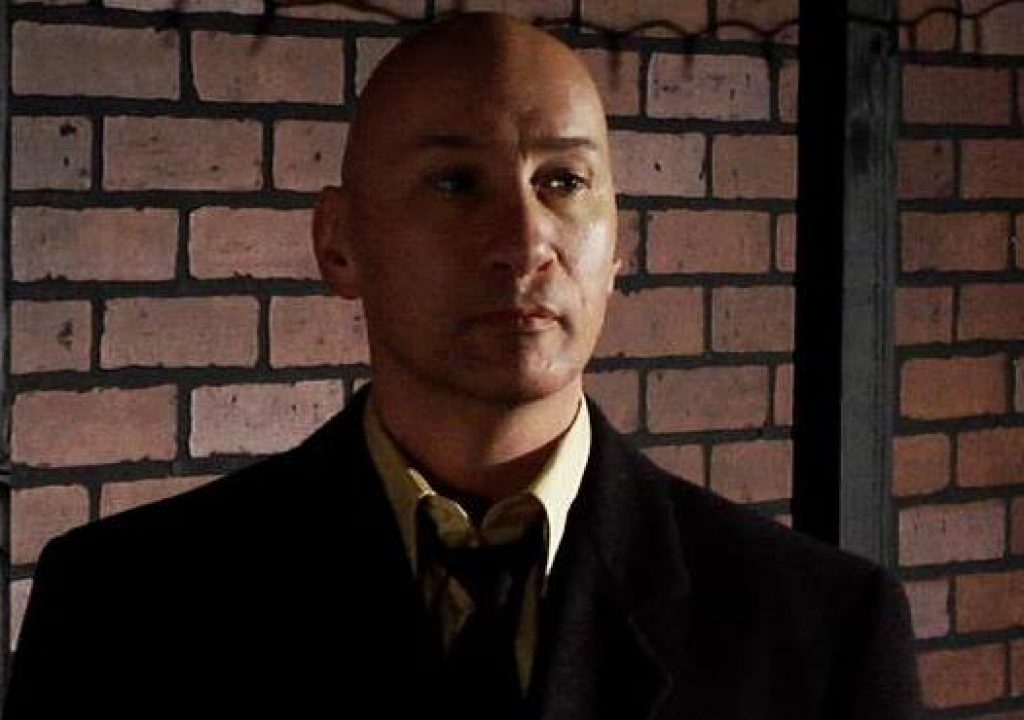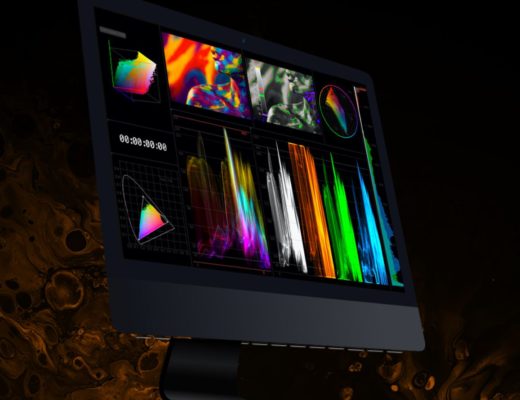We’ve talked with the people at Sony creative Software about their offerings before, and it’s always great to find out what the people behind the curtain are thinking about and working through. User experience is often a much different conversation though, and we wanted to find out what the users of products like Sony Vegas Pro were saying about the product.
 To do so, we tracked down David Jimerson from WrightsvilleBeach Studios, where the dedication to creating the finest, most informative, and most entertaining training materials for how to make films is evident. They’ve done multi-hour instructionals for filmmaking, the prominent ones being Sound for Film and Television, Lighting for Film and Television, and 24p and Frame Rates. They made complete short films as part of the instructional videos, teaching filmmaking by going behind the scenes of real sets, and these short films have done well on the festival circuits, playing at such prominent fests as Slamdance and SXSW. David is presently producing an instructional series for the Catalyst Suite.
To do so, we tracked down David Jimerson from WrightsvilleBeach Studios, where the dedication to creating the finest, most informative, and most entertaining training materials for how to make films is evident. They’ve done multi-hour instructionals for filmmaking, the prominent ones being Sound for Film and Television, Lighting for Film and Television, and 24p and Frame Rates. They made complete short films as part of the instructional videos, teaching filmmaking by going behind the scenes of real sets, and these short films have done well on the festival circuits, playing at such prominent fests as Slamdance and SXSW. David is presently producing an instructional series for the Catalyst Suite.
We wanted to explore how he uses Sony Vegas Pro, and why that software is his preference over some of the other more prominent NLE’s. We talk through his history in the industry, how he got started using Vegas Pro, what the biggest misconception is around the software and plenty more.
ProVideo Coalition: Tell us a bit about your career and company. What sort of projects do you work on?
David Jimerson: I started doing freelance video work in the early 2000s – the usual things; weddings, corporate videos, audition videos, editing other people’s footage, etc. I did promotional work for a couple of buildings being built and/or renovated in Charlotte, NC.
I made some short films, nothing really worth mentioning, as everyone’s early work is fairly terrible, and I never had any illusions about that.
I got connected with the online filmmaking community and was one of the key members of DVXuser.com, which grew into the biggest online filmmaking community.
I built up a reputation as one of the early Vegas experts, and I started producing instructional videos for it. I was never satisfied with many of the available tutorials, and knew I could do them much better, so I did – and people noticed.
Around ten years ago, I started collaborating with Barry Green, who had made a worldwide name for himself as the guru for Panasonic cinema cameras. Together, we made a series of instructional DVDs for various Panny cams, and the success of those allowed us to open Wrightsville Beach Studios and produce instructional videos full-time.
Barry left the company a few years back. These days, the business has been more about for-hire work, as the market for direct-sale instructional videos has tapered off considerably, and a lot of the cameras we made tutorials for are well out-of-date. But one of the things I’ve really found myself enjoying of late is writing and producing audio plays, for which Vegas is actually a really good fit.
Our videos have never been typical though – we employed a lot of humor, irony, and sketch comedy in our instruction. Our operating theory was always that if you entertain people, they’ll be more likely to engage with and retain the information being taught. We also intended for it to be an opportunity to put the proof in the pudding – our cinematic vignettes are actual, real-world film productions, so we can dispense with “hypothetical” examples and actually show people how it’s done while we do it. It worked, and our various videos have been both successful and very highly-regarded.
What’s been the biggest change you’ve had to deal with since you started your career?
The proliferation of people posting lots of tutorials for free on YouTube. The wide variation of codecs and formats as camera after camera exploded onto the scene. Distribution moving away from optical disc to download or streaming.
Many of the changes have been to the good, but it’s almost a full-time job just keeping up with it all.
Do you keep up with those changes via software/hardware releases as they come out, or from conversations you have with your colleagues, or from info you find and come across online?
Well, all of that, really. Unless I’m following something I’m already anticipating, the first place I generally hear of something new is on DVXuser.com or on Facebook, where there will be lively conversations. If there’s something especially new, like a new codec, I’ll investigate with web searches, writeups, etc.
I don’t generally get into the weeds of, say, new cameras, because there’s very little to be gained by discussing it to death, by trying to analyze every tiny little detail of it, especially long before it’s even available to the public. “Pixel-peeping,” we tend to call it. Those kinds of conversations tend to get quite contentious, and they’re often pretty useless.
What I don’t get is why people want to do “shoot-outs” — comparisons between several cameras. I mean, I do get why people want to do it, but the resulting firestorm they always cause makes them unbearable, especially for the people involved, who get accused of bias, of incompetence, and worse. The results are always in question, and they generate far more heat than light.
I’d rather just see footage from a camera of a type that I’d shoot, and go from there.
How has the blending of production and post affected the way you work?
It hasn’t, really. I do very little which requires a turnaround so quick as to make the blend useful for me.
That said, one of the advantages of Vegas has always been how nimble it is. It’s always had pretty low minimum specs, so it would run beautifully on laptops, making on-set post much easier, if that’s what you wanted to do.
That’s a good segue to talk through how you use Sony Vegas Pro. When and why did you start using the software?
I was an early user of the Panasonic DVX100, the first affordable 24p camera. Vegas’s integration with that camera was by far the most seamless; its 24p implementation was flawless and extremely powerful. No other software came anywhere near it. Users of other software hated it when I’d say that, but it was true.
I stayed because it was also the most intuitive, stable, and powerful editor of that day, in addition to being the least expensive. There was nothing you couldn’t throw at it, and it would take it in stride. This was back when most other software required you to transcode all of your footage. Vegas didn’t. It was perfectly happy with almost anything on its timeline, side-by-side with anything else.
Vegas’s render engines and scalers were also top of the heap. Just about everyone else was putting out reference videos and going to outside encoders like Sorenson or Compressor, but Vegas would render directly from the timeline with a quality as high as those programs. It still does.
It should also be said that DVD Architect was also a big plus. DVD authoring and creation isn’t nearly as important today as it was then, but at the time, it was hard to beat DVD Architect. It was very much the Vegas of DVD authoring – as intuitive, as powerful, fantastic results (though not without its quirks). To this day, no one has put out a DVD authoring app which came anywhere near it. It was simply head-and-shoulders better than anything – Encore, DVD Studio Pro, etc. So, I was always happy as a clam in my Vegas/DVD Architect environment.

Sony Vegas interface
How familiar are you with Premiere, Media Composer and/or Final Cut? What advantages does Vegas offer over these other tools?
I can work competently in them, though I prefer not to. I’ve had the most experience with Premiere, because unlike most in the film/video industry, I don’t particularly care for Macs, and work chiefly in Windows.
Vegas’s advantages have always been about flexibility. It lets you work the way you want to, set up your interface the way you want to, and – this is critical – lets you organize your timeline the way you want to. Your audio and video tracks are not segregated like in the other programs, and they are easily movable up and down, however you want to arrange them.
Also, changing project/timeline properties is easy in Vegas; you’re pretty much stuck with what you start with in the others. So if you want your timeline to be a different frame rate halfway through your project, you can change it. If you want to change the resolution, you can. Now, I haven’t kept pace with ALL of the software, so the very latest versions of some of the other programs may well have implemented greater flexibility along those lines, but that was always a huge gap.
An under-appreciated feature of Vegas is its audio waveforms. You can zoom in on the waveform of an audio file almost down the sample. Once you learn to read a waveform, it’s extremely useful for sound editing purposes, and also for sound synch. And more importantly, the waveforms remain visible while you move the clip, while they don’t in other software. Matching waveforms is a great visual way to synch sound. (And organizing your timeline tracks the way you want them organized factors into this to a great extent.)
As well, if you’re playing the timeline, playback doesn’t stop if you move or edit a clip. You can do great on-the-fly editing this way. It’s traditionally been more difficult to do that in other apps.

David Jimerson’s personal, customized two-screen Vegas setup
How long do you think will it take for anyone familiar with one of those NLE’s to figure out how to work in and utilize Vegas?
For some people, it’s a bit of a challenge, because Vegas has always approached editing from a different perspective than those programs do. Avid, Adobe, and FCP all tried to replicated what editors were used to at the time, with source/record decks and monitors. Premiere and Avid still trace their legacy back to that, as did FCP, though FCPX is a bit different in that regard.
Vegas never did that. Vegas started out as an audio app, and when the video was added, it was done not from the perspective of what had gone before, but how best they could think of to do it. So, it ended up being a very different kind of program, and it threw people. It continues to, though those cutting their teeth on FCPX probably find it less of a harsh transition. There’s a bit of an unlearning process involved.
So, how long? Depends on the person, really. How did they learn editing? Did they learn the basics of editing first and then the program they use second, or did they learn the program first and get their conceptions of editing from that? If you really know how to EDIT, rather than how to run a particular piece of software, Vegas is really intuitive. For me, it least, it always fit how my brain works, so I took to it like a dolphin to water.
But if you’re convinced that the other software is the “right” way of doing it, then you may find it confounding.
When it comes to audio, what sort of options does Vegas Pro open up for you?
Vegas has without a doubt the most complete array of audio tools of any NLE.
But I’m no sound engineer. I’m an writer/director/editor, not a sound post professional, so I don’t come anywhere close to squeezing the juice out of Vegas for sound editing purposes as others could. Someone who works with sound much more deeply than I do could probably get some astounding results with it, but I’m not really that guy. I work with sound well enough to do what I do, to give me good finished sound for my projects, but I’m not the guy designing killer audio for other people.
That said, one of the things that Vegas really appeals to me for is 5.1 surround editing. The slick visual interface and easy keyframing make it a whole lot of fun to create surround mixes. Other software uses levels and non-intuitive ways of mixing the sound; Vegas gives you a diagram of your room and speaker setup, and you visually place where you want the sound to be. I’m a visual person. That really works for me. And it’s topical, because the next audio play I produce will be mixed in full surround.
Are professionals surprised to find out that they can, say, create an animated ringed planet using only the tools found inside Sony Vegas?
Heck, yeah. Not only them, but the guys in the Sony Creative Software office were pretty surprised by it, too. To my knowledge, I’m the only one who’s ever done anything like that with it.
I’m not sure anyone REALLY previously appreciated how powerful the tools in Vegas really are. While it is NOT as robust as some of the most sophisticated dedicated FX software, there’s an astonishing level of sophistication packed in there. There are tools which will let you do things most people think you can only do in After Effects or Illustrator or Photoshop, and to be honest, a lot of the skills developed in those programs are transferable to Vegas. I’d say that a highly-proficient After Effects artist could find a lot of power in Vegas.
And in fact, the stuff I’ve done with it, just to squeeze out the power – I haven’t really taken it all the places it can go myself. There’s even a lot more I could do with that animated planet. And that’s just with internal tools and generators in Vegas; that’s without adding outside media.
How have you seen the tool improve or become more powerful with recent upgrades?
Recent upgrades have been fairly incremental, each adding a nice new feature or two, and making work with various codecs and formats much better and smoother, but nothing compared to the watershed changes when Vegas 5 was released. That version entirely revolutionized the software, made all the cool things I do with it possible, and no version since then has had quite the impact as that version did.
Do you utilize Catalyst Browse and/or Prepare with Vegas?
No. At least not yet. There really isn’t any integration between Vegas and Catalyst, so a lot of what you do in Catalyst Prepare won’t even show up in Vegas.
Using Catalyst to organize footage may be something I’ll explore in the future, but for right now, Catalyst is so new, and so tightly-integrated within itself, I haven’t developed any of kind Vegas workflow to leverage it yet.
What’s one of the big misconceptions people have about Sony Vegas?
That you can’t make decent titles with it. It’s because people don’t really understand how Vegas’s titles work. People seem to expect some kind of all-inclusive titling app, but that’s just not how Vegas works best. Vegas’s original titler, which I still use most often (their attempts at “pro” titlers have really not been especially good), was designed to get your words onto the screen, and that’s about it. After you do, the title is an asset to work with just like any clip, so you use Vegas’s excellent array of VFX to do all of the things, and more, you might otherwise expect to do in an all-in-one titler.
Personally, I prefer to work with titles that way. I may be in the minority on that, though.

An example of text done in Vegas
Is there a particular tool or capability that you’re hoping to see realized in a future version of Sony Vegas?
I have long wished they’d modernize the appearance of it. Functionality comes first, of course, as does customizability. But it sure could use a facelift. It might spark some new interest, in fact. I’ve heard more than one comment about its “Fisher-Price” interface. It’s kind of hard to disagree.
One thing I’d really like to see is kind of specialized – I’d like to be able to do color-correction by manipulating the video scopes. I’d like to be able to go into a vectorscope and pull the colors to where I want them to be. There was an editing app years ago which let you do this; while Vegas was a superior editing app in most other ways, I always wished Vegas had that functionality.
What advice would you offer to anyone who isn’t sure whether or not Sony Vegas is going to be a fit for them?
Download the trial. You need to get your hands dirty with it – or any other software – before you can really know if it’s a good fit. Do a small project with the trial. Try to put as much of it through its paces as you can.
Also, consider the purpose you’re going to put it to. Are you going to collaborate with others a lot? It might not be your best bet. Vegas is a very robust self-contained system, but it does not play well with other editing software.
But if you’re going to be doing your own work and not passing much off to anyone else, or picking up where someone else left off, it can be a fine choice. It’s very powerful, relatively inexpensive, and intuitive to learn.

Filmtools
Filmmakers go-to destination for pre-production, production & post production equipment!
Shop Now














